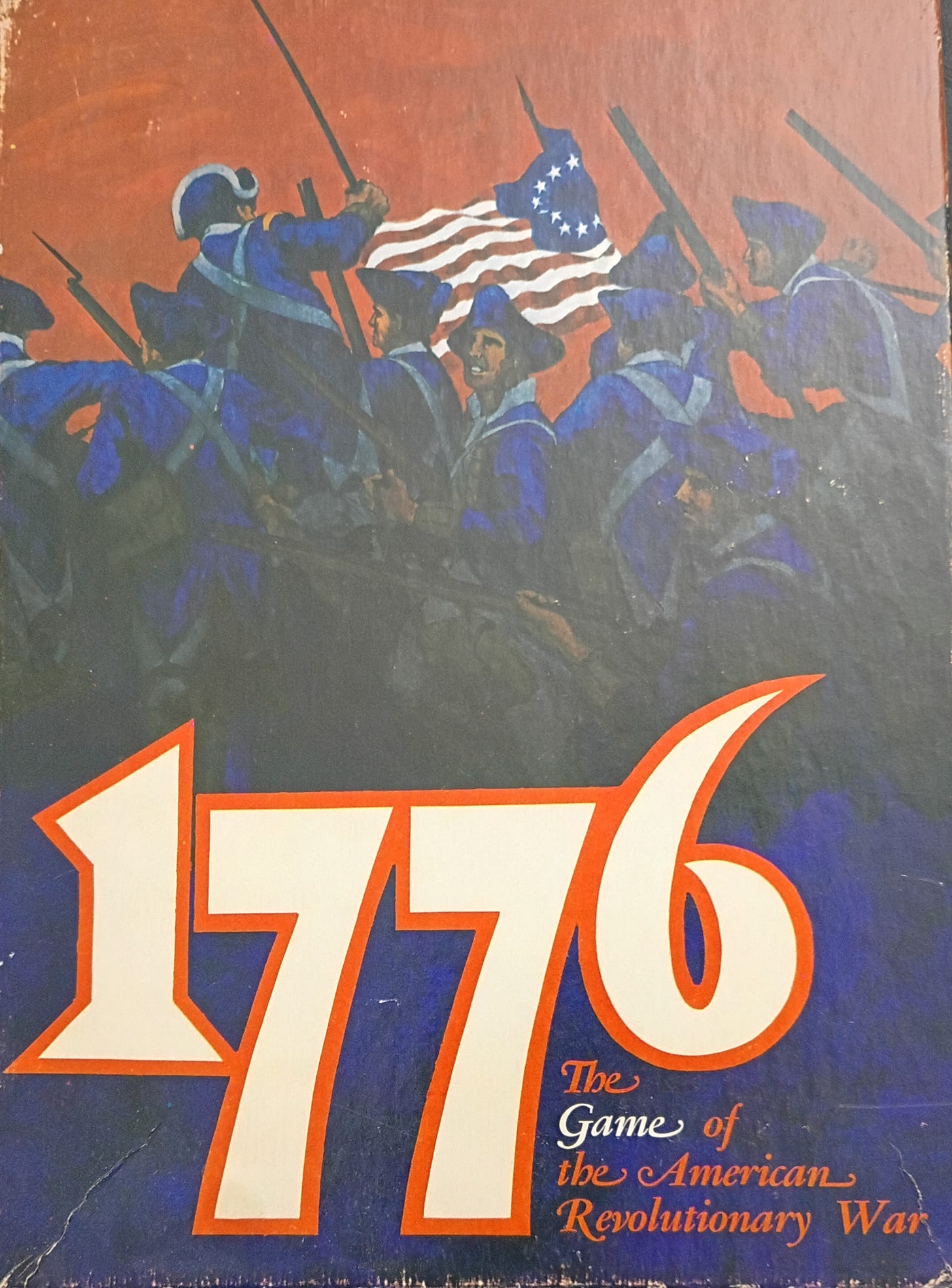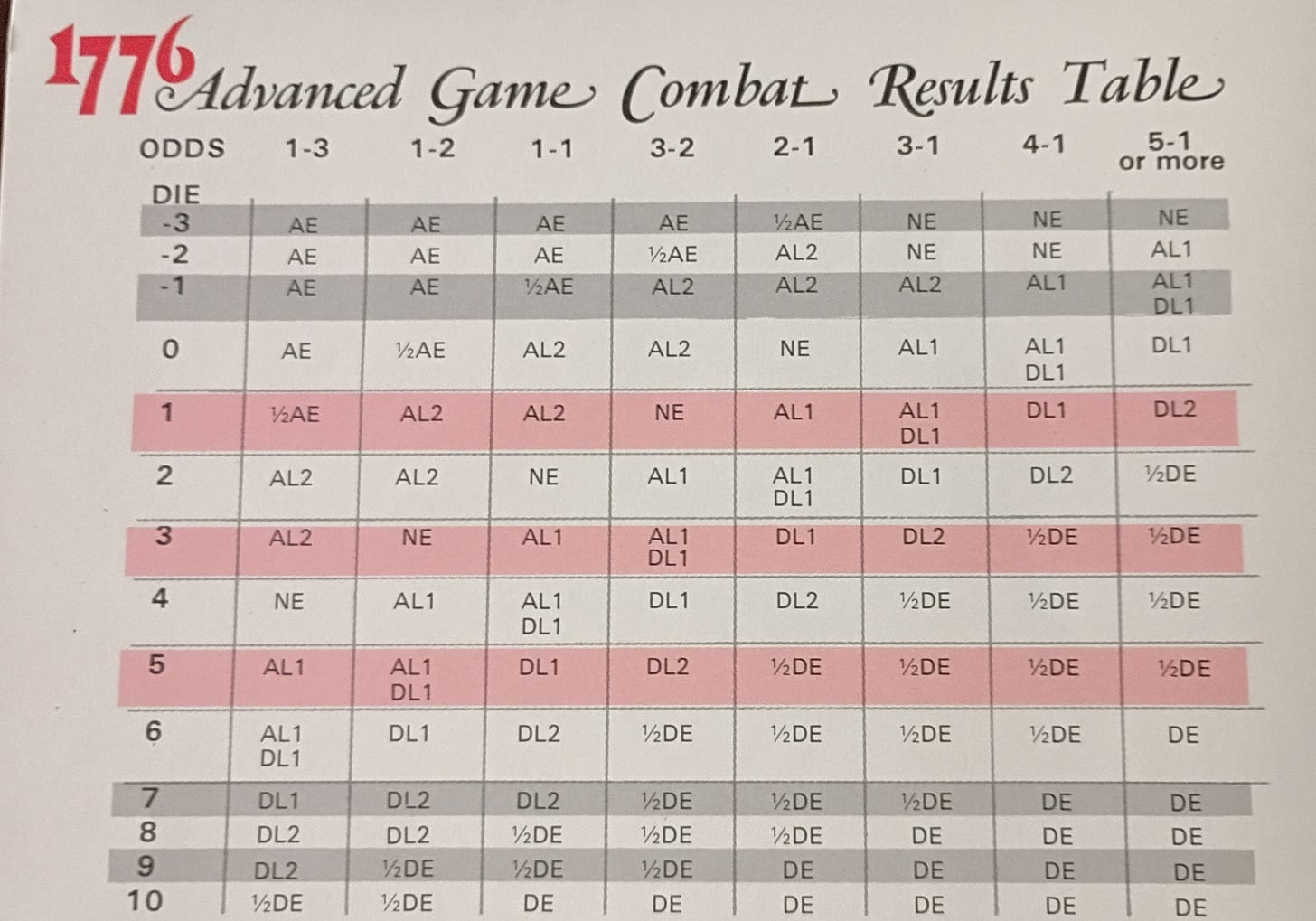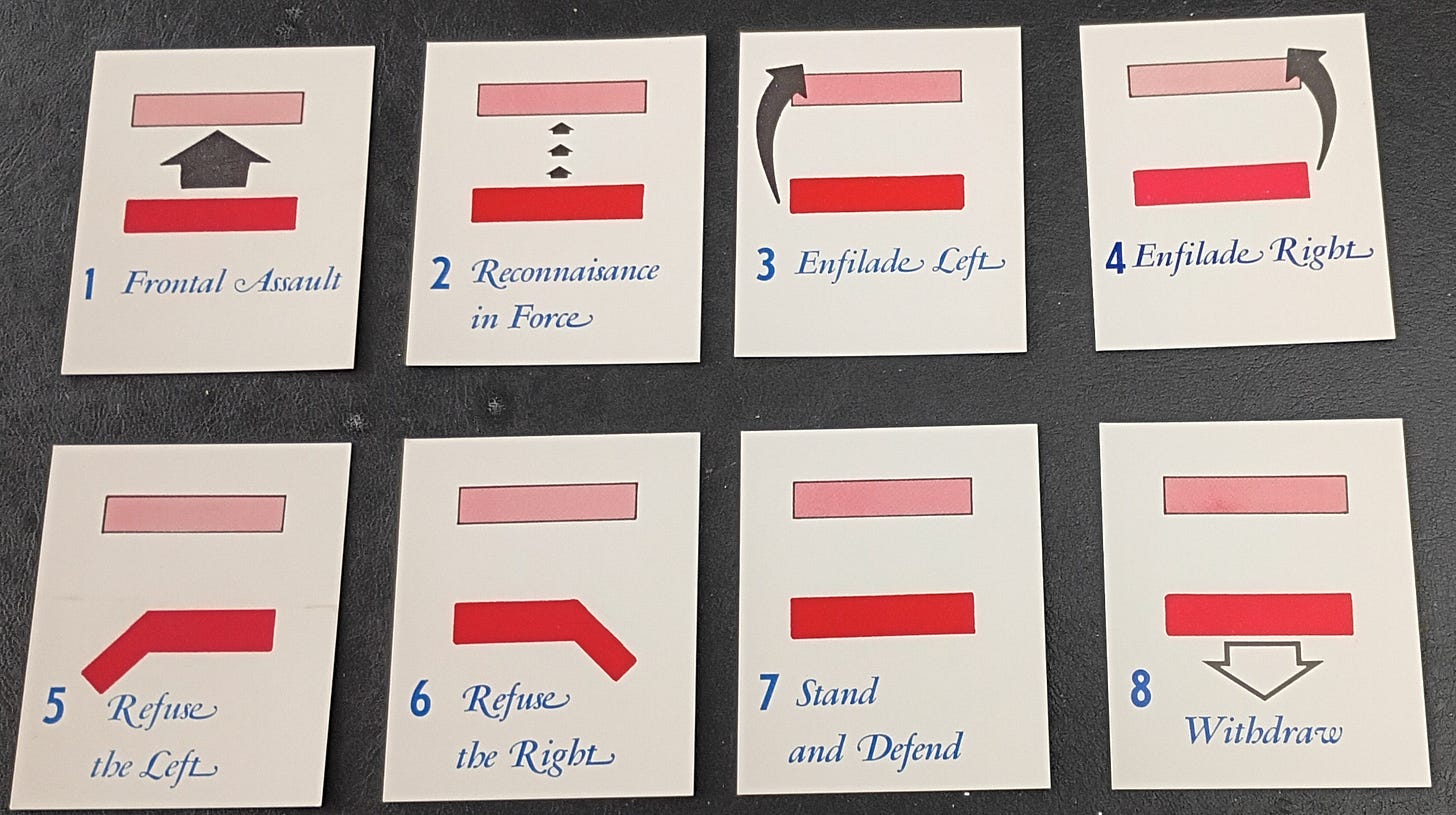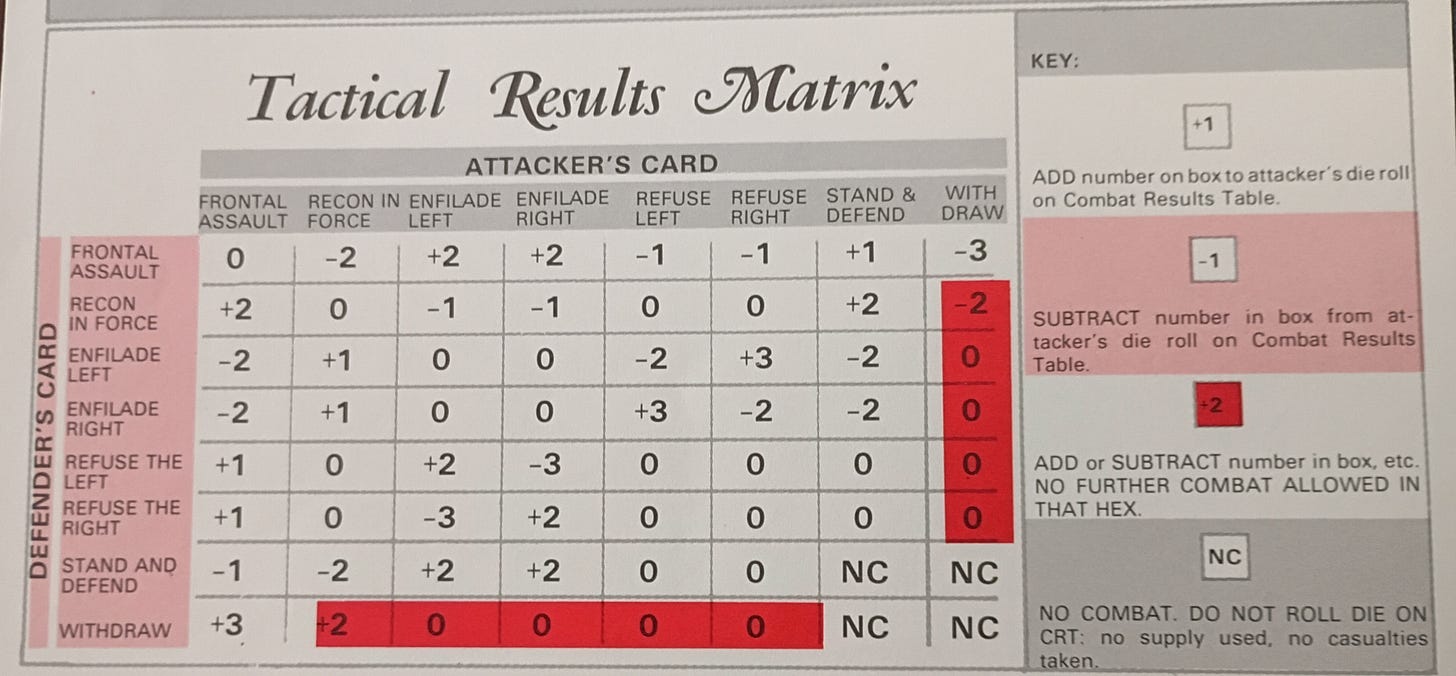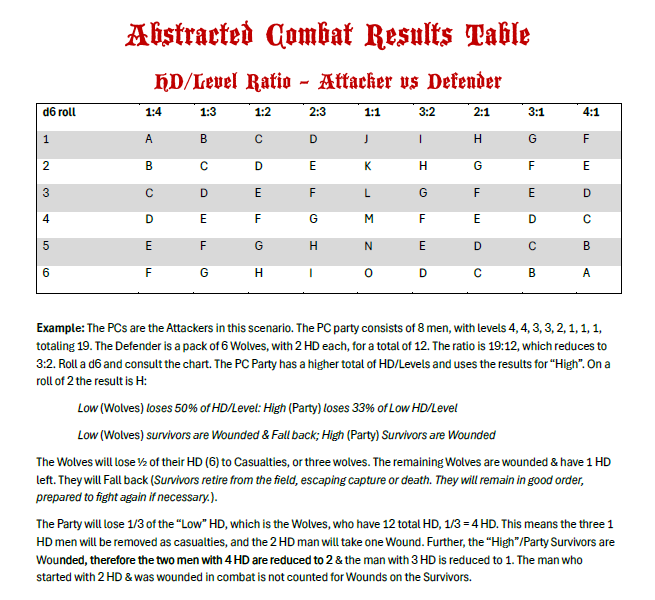I’m working on the next zine in the Paradigm series, working title, “The Faction Paradigm”. Some of the research and playtesting is happening on my RPG yootoob channel World of Weirth FRP - Solo Gaming.
If you are interested in Sword & Sandal-type fantasy adventure gaming, I’d invite you to check it out.
Part of this project includes a method of abstracting combat for larger battles between Factions or Domains, loosely based on the principles of The Killing Fields.
The core of the process is the Combat Results Table, and the Battle Modifiers Table inspired by the 1974 Avalon Hill game, 1776.
The CRT for 1776 is a ratio-based table with a modifier for the tactics each side chooses.
Results Key:
AE - Attacker eliminated
1/2AE - one-half of Attacker’s strength points eliminated
AL2 - Attacker loses 2 strength points
NE - No effect
(and so on)
I think the most interesting aspect is how the result is modified by the Tactical Cards.
Each player has a deck of these 8 cards, and they will each choose one when there is a battle. You then consult this chart for determining the combat modifier.
Example, the Attacker (with 6 strength points) chooses Refuse Left while the Defender (with 4 Strength points) chooses Enfilade Right. The result is +3 to the Attacker’s roll on the CRT.
The cards and their matrix provide a tactical aspect to what otherwise is very much a strategic game.
The game is strategic, which is necessary when attempting to approximate continental warfare. But there are tactical aspects added to the design that dilute the abstraction of the strategic scale.
I have to admit being captivated by this mechanic, and I wonder why it’s not been used in more games.
Abstracted Massed Combat for Solo Play
For the solo game I’ve been running, I’ve created the following table for individual combat, in an abstracted format.
Example: The PCs are the Attackers in this scenario. The PC party consists of 8 men, with levels 4, 4, 3, 3, 2, 1, 1, 1, totaling 19. The Defender is a pack of 6 Wolves, with 2 HD each, for a total of 12. The ratio is 19:12, which reduces to 3:2. Roll a d6 and consult the chart. The PC Party has a higher total of HD/Levels and uses the results for “High”. On a roll of 2 the result is H:
Low (Wolves) loses 50% of HD/Level: High (Party) loses 33% of Low HD/Level
Low (Wolves) survivors are Wounded & Fall back; High (Party) Survivors are Wounded
The Wolves will lose ½ of their HD (6) to Casualties, or three wolves. The remaining Wolves are wounded & have 1 HD left. They will Fall back (Survivors retire from the field, escaping capture or death. They will remain in good order, prepared to fight again if necessary.).
The Party will lose 1/3 of the “Low” HD, which is the Wolves, who have 12 total HD, 1/3 = 4 HD. This means the three 1 HD men will be removed as casualties, and the 2 HD man will take one Wound. Further, the “High”/Party Survivors are Wounded, therefore the two men with 4 HD are reduced to 2 & the man with 3 HD is reduced to 1. The man who started with 2 HD & was wounded in combat is not counted for Wounds on the Survivors.
I plan to use the Tactical Results Matrix of 1776 to aid in creating an abstracted combat method for larger-scale battles.
Other Considerations
I am wondering about other factors that could influence the CRT results, such as amount of Cavalry troops, number of “heavy” troops vs number of “light” troops, and so on.
I’d love to get your input on how these ideas might work in the abstraction format. In September, we’ll be playtesting these rules with videos for paid subscribers, so watch for that!
Leave a comment, I love to hear from you.


